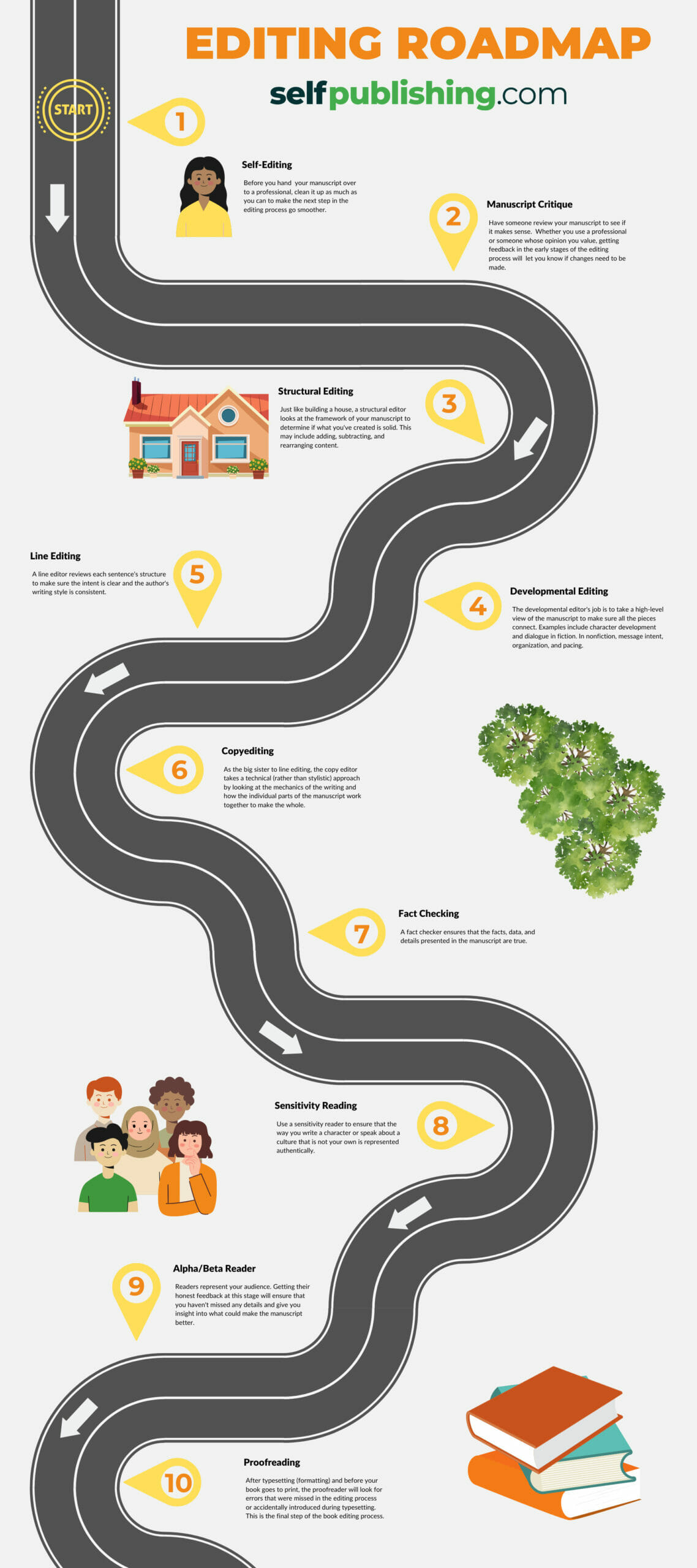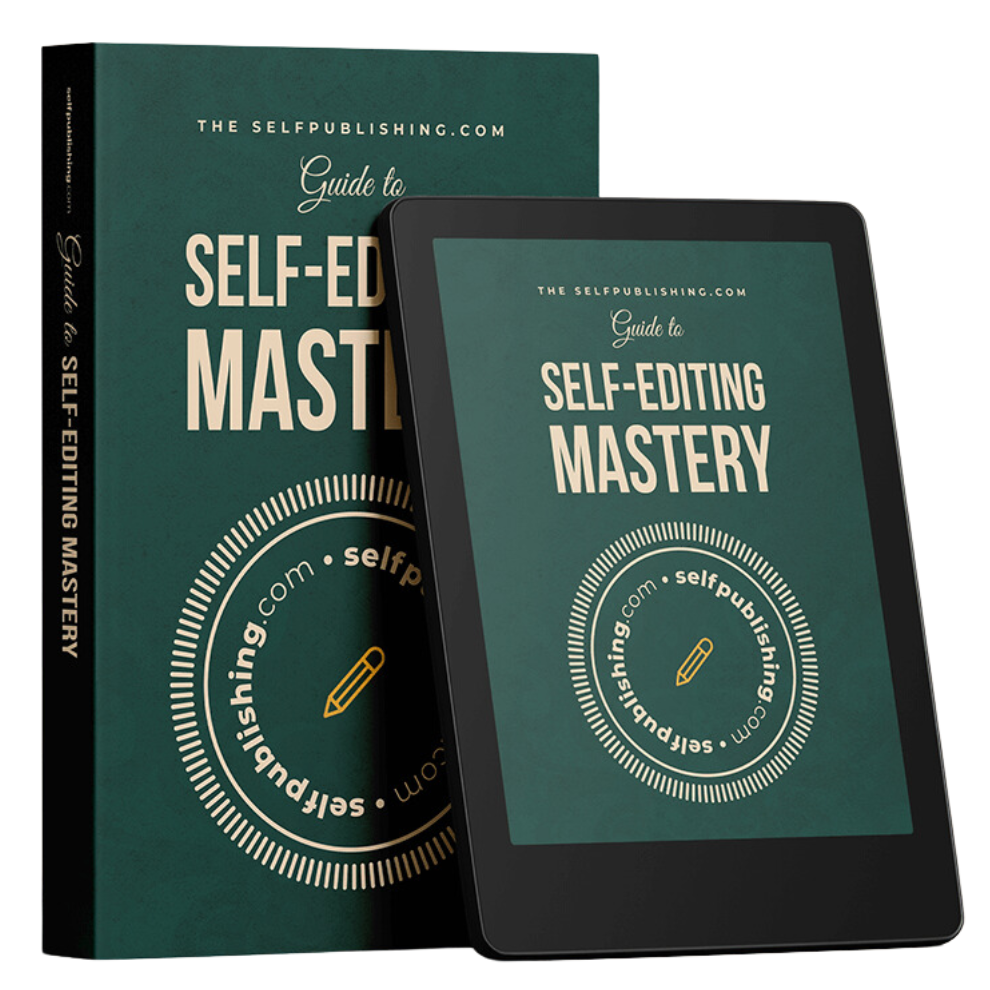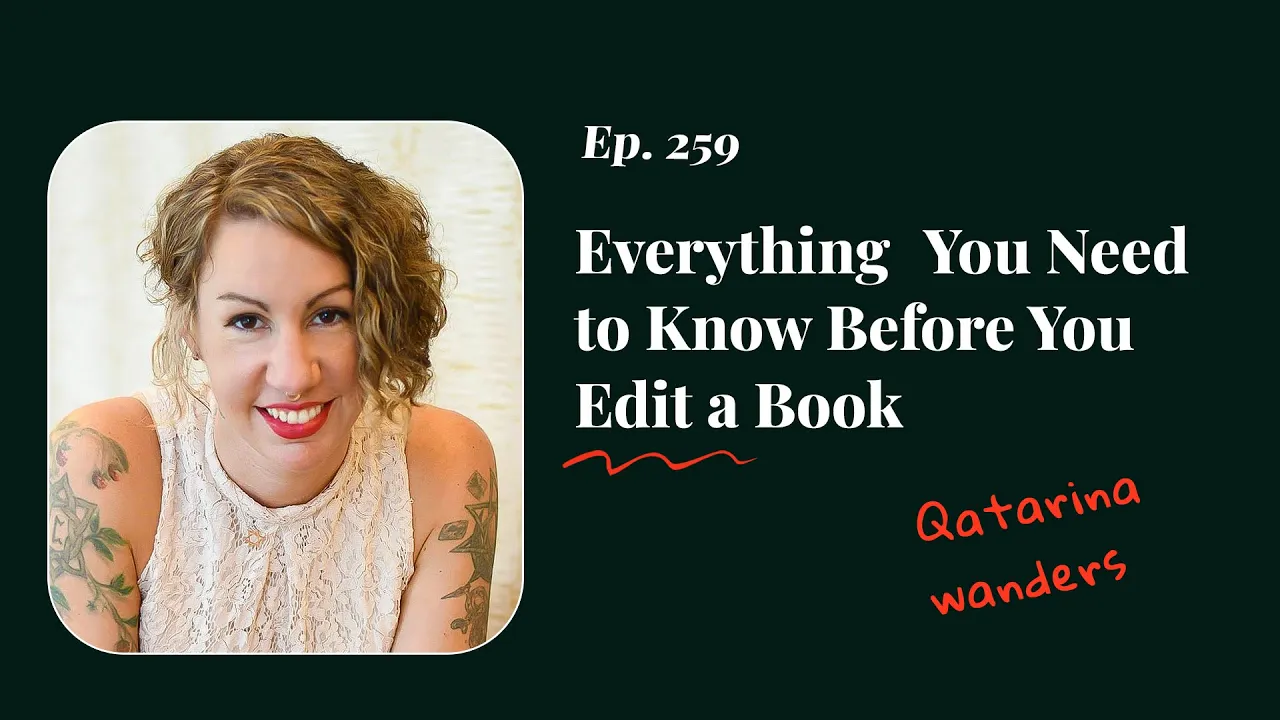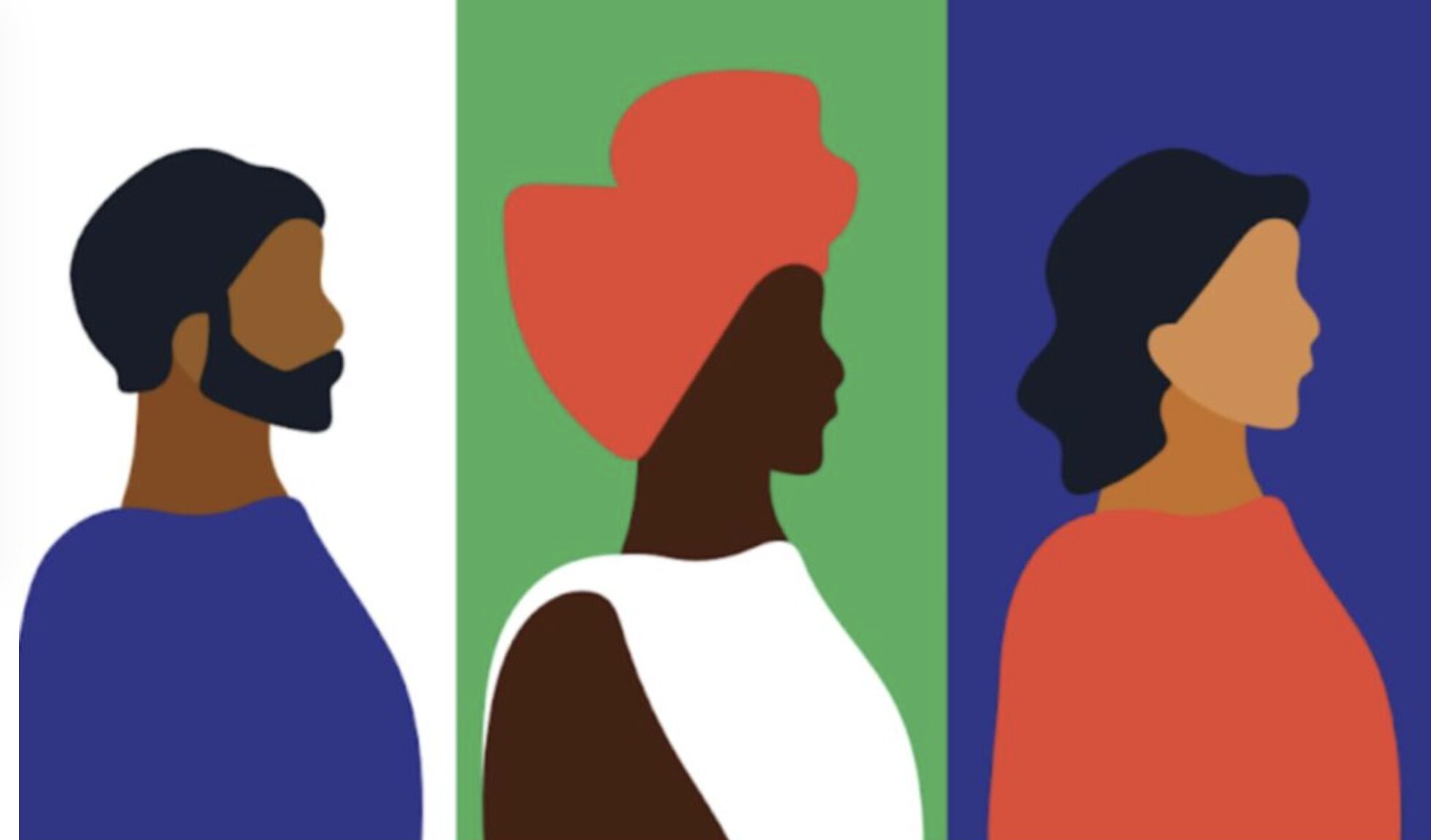Every book manuscript can benefit from different types of editing, but as a writer, I feel your pain. Getting those thoughts out of your head and into a book is exhausting. Now you have to think about the types of editing?
At this point, you may wonder if you can get by with the bare minimum of a Grammarly or ProWritingAid™ quick scan.
Brain fatigue and impatience can make you want to take shortcuts, but if you can tough it out through the editing process, you’ll likely be much happier with your book on the other side.
The quality of your book – and editing – matters
In 2022, over 4 million books were self-published or published commercially.
The book market is crowded because the barrier to entry for self-publishing is low, so it’s not hard to elbow your way into the sea of sameness. If you want your book to be taken seriously, shifting from an author mindset to a publishing one is critical.
It’s not enough to get the thoughts out of your head and into a Google Doc. The words must also be designed, arranged, or changed so nothing hinders your intended reader from accessing your story or message in its purest form.
The challenge most authors face is creating the necessary distance from their work to see it objectively. You must, at the same time, think like a publisher (who’s thinking about how to sell and market a book) and learn how to become a great book editor who can sit in the audience’s chair and see what your audience sees.
Both can offer you the perspective you need to create an even better book.
But there’s more. Within the umbrella of book editing, there are different types of editing, each with its own appropriate place in your writing process.
In this article, we’ll look at the different types of editing available and hopefully take some of the stress out of deciding which one(s) will work best for your manuscript.
10 types of book editing
Before starting your editing journey, understanding the different levels of editing and how they can improve your manuscript is critical. All editors are not created equal, and despite sharing a title, they are not interchangeable. They offer different skill sets, so finding the right fit will reduce headaches, save time, and maximize your budget.
The types of editing are listed below in order of progression. Manuscript needs vary, but the editing order should remain the same to avoid unnecessary revisions and backtracking.
Within the publishing industry, you’ll find overlap with some of these definitions. You’ll find a note wherever there is a crossover.
1. Self-editing
This kicks off the editing process, where you tighten up your manuscript as much as possible. That way, when the professional editing work begins, the manuscript won’t be weighed down by errors that could have been easily corrected on your end.
Leave the heavy lifting to the editor, but get the lighter stuff out of the way, like spelling, common grammatical errors (e.g., their, there, they’re), point of view mix-ups, and predictable characters, plots, or conclusions.
SP recommendation: Leave the self-editing until the rough draft is complete. Trying to edit while writing reduces momentum.
2. Manuscript critiques
Assessments, general reviews, or evaluations come next in the editing process. Once you’ve completed your self-edit, it’s a good idea to have someone read the manuscript to get some high-level feedback. You can hire someone to do this or ask someone whose opinion you trust (an alpha reader) to take a look.
At this stage, you want to know if your writing makes sense. If it’s nonfiction, does it answer a specific question by offering a new solution or an interesting take on an old one? If it’s fiction, is the story easy to follow? Are the characters interesting? Your manuscript will not be “perfect” at this stage, but at the very least, a manuscript edit will let you know if you’re on the right track.
SP recommendation: Carefully weigh the manuscript critique feedback. Ask clarifying questions so you’ll know which stage of the editing process should come next or if you should consider a rewrite.
3. Structural editing
This is often included with developmental editing (next on this list) and, as the name suggests, looks at the content’s structure to determine what should be added, subtracted, or rearranged for a better reading experience.
This may include moving sections and chapters around and adding or deleting content, even if you created a detailed and intentional book outline before writing. This is just another part of the process!
4. Developmental editing
This type of editing focuses on how a manuscript’s story, message, thesis, or argument is built. The developmental editor’s job (whether it’s fiction or nonfiction) is to take a broad overhead view of the manuscript to determine what would make it better as a whole.
For fiction editing, think of pacing, character development, and point of view. For nonfiction, it’s the connection between ideas, supporting facts, voice, and tone. For both fiction and nonfiction, a developmental editor will consider your audience’s needs and suggest ways to adjust the manuscript.
5. Line editing
Line editing or stylistic editing looks at each sentence’s structure, including grammar, word choices, and phrasing. It focuses on how words convey meaning.
6. Copyediting
Copyediting is very thorough and honestly includes a little bit of everything.
In The Copyeditor’s Handbook, the authors describe copyediting as “one step in the interactive process by which a manuscript is turned into a final published product.” They outline six principal tasks achieved by this type of editing: mechanical editing, correlating parts, language editing, content editing, permissions, and markup.
Where a line editor will focus on how something is said, a copy editor looks at the technical bits and pieces that make a manuscript cohesive.
This is not to be confused with copywriting, which might come up while marketing your book. Copywriting refers to writing words that help sell a product, such as you’ll use in your Amazon ads. Copyediting is a type of editing that you’ll use on your book manuscript.
7. Fact-checking
Perhaps not strictly a type of editing, this is still a very important step of the book writing and publishing process. Fact-checking ensures that the data and details in your manuscript are correct and is valuable in both fiction and nonfiction books.
As an author, your reputation matters, so triple-check the facts yourself, and if there are a lot of statistics, data, or verifiable information, hire a professional book editor who knows what to look for and where. This person might do another type of editing at the same time – or they may only do the fact-checking. This will depend on their skills and the services they offer.
Either way, it’s important that you make sure exactly what your editor is doing. If you hire a copyeditor, for example, you can can’t assume they are fact-checking as they go.
8. Sensitivity reading
This includes checking the manuscript for stereotypes, biases, and cultural inaccuracies.
If you are writing about an ethnicity or culture that is not your own, a sensitivity reader can point out any areas of concern and offer suggestions.
Whether you are intentionally using stock characters and leaning into those stereotypes or unintentionally applying a stereotype that could be hurtful, how you represent others matters. Sensitivity readers give insight into what could make your character or details (if nonfiction) more authentic, relatable, and acceptable to the culture they represent.
9. Alpha and beta reading
These people are not hired editors but are a necessary part of the editing process, nontheless. An alpha reader is someone you trust (e.g., a family member, business partner, or mentor) who can give honest feedback on your rough draft before the editing process begins.
Beta readers represent your audience and come at the end of the editing process before typesetting. You can hire professional beta readers or find them through your email list or social media community.
10. Proofreading
Proofreading is the last editing before your manuscript goes to print. It’s the final set of eyes that scans for errors overlooked during the initial editing or introduced during typesetting.
The proofreader’s job is to ensure that your work is “error-free” and ready to be published.
Note: The ultimate goal of the editing process is to create a book without errors; however, even the best team of editors can miss something. Serial author Jonathan Green adds a “Did you find a typo?” page in the back of his books that directs readers to a landing page where they can report errors directly to him rather than leaving a negative review because of a grammar mistake. His proactive approach to errors allows him to address them immediately and upload an updated version of his book.

What type of editing does my manuscript need?
If this is your first time going through the editing process and you’re unsure where to begin, a manuscript critique could give you some direction. Based on the feedback, you can decide the best type of editing to help your book the most.
For a fiction manuscript, author K.M. Welland offers suggestions on what questions to ask the person critiquing your work. A few of them include:
- Is anything confusing?
- Are any scenes boring or repetitious?
- Do you spot any general tics (repeated words, etc.)?
- Do you spot any confusing plot points (let me know when and where I lose you and what needs to be clarified)?
- Does the opening grab you?
- Is there an appropriate balance of action with the other subplots?
The questions for a nonfiction critique will vary slightly depending on whether the manuscript is narrative nonfiction (a true story written like a fiction novel) or informational. For the latter, questions will focus less on story building and more on the manuscript’s thesis and whether or not it is convincing.
If you hire someone to do the critique, ask them upfront what it will cover, and if there are additional questions you’d like answered, don’t be afraid to ask.
What do I look for in an editor?
While an editor’s skill set is valuable, if their editing style is not a good match for you, it won’t be a good experience.
If you’re wondering how to find an editor, here are some things to consider before hiring:
- Do they have experience in your genre (e.g., thriller in fiction, self-help in nonfiction)?
- Based on your budget and their fee, is it a good match?
- What is their turnaround time?
- What is their area of expertise (e.g., developmental editing, copyediting, proofreading)?
- How do they communicate?
- What style guide do they use (e.g., Chicago Manual of Style, APA, MLA)?
- Do they have samples of their work or offer sample edits?
- What software do they use to make edits? Is it compatible with yours?
Editing should be a partnership built on trust, so choose carefully. Your editor should be a good listener and patient, and there should be a feeling of mutual respect and collaboration. If something about an editor makes you uncomfortable, listen to your gut and look for someone else.
Editor Amanda Lewis offers insight into an editor’s responsibility to authors in Editing Code.
How much does book editing cost?
Based on the Editorial Freelancers Association website, for a 60,000-word nonfiction manuscript, you can expect individual project rates similar to the ones below unless the services are bundled, which is usually cheaper.
- Developmental Editing: Cost: $2,400 – $2940
- Line Editing: Cost: $2,400 – $2940
- Copy Editing: Cost: $1800 – $2,340
- Fact-Checking: Cost: $3,000 – $3,540
- Sensitivity Reader: Cost: $600 – $1,140
- Proofreading: Cost: $1,200 – $1740
Developmental editing often includes structural editing, which is not included in the list; however, you’ll want to check with the editor to make sure. Editing prices will depend on the editor’s experience as well as the length and genre of your book.
Helpful tidbits
- If you ask someone to read your manuscript and there are parts they don’t understand, believe them. Putting your best book out there is not about ego. It’s accepting that while you have great ideas and may be a great writer, a professional book editor has the skill set and experience to enhance your vision so that your story or message resonates with your readers. That being said, you are the final authority, so evaluate the edits based on the editor’s expertise AND your gut.
- Never be both author and editor (unless it’s self-editing). Professional editing requires an editor to be removed from the work so they can view it objectively. A common occurrence when trying to edit your work is for your brain to fill in the blanks of what should be on the page – rather than what is actually there. An extra pair of eyes can see what you may overlook.
- When self-editing, slow down and say it out loud. Also, try reading sections backward, line-by-line, which forces you to slow down and makes it easier to spot small grammatical errors.
- Expect to re-write some things. With in-depth editing like developmental, line, and copyediting, an editor will often suggest rewrites. Rewriting is not the editor’s job. Unless the book has been ghostwritten, the author should do the rewriting (not the editor) to maintain the integrity of the book’s voice and your unique tone of writing.
- Remember that (self) publishing a great book is all in the details. You can try to do everything yourself, but why when other people can do it better? This is not meant to be harsh, but when you are stepping into the role of self-publisher or preparing your book to be picked up by a publisher, the more polished your book is, the more it will shine.
- Get a contract, agreement, or work order that clearly outlines what the editor will do. Since editing types and terms can overlap, you want to make sure that you know what to expect. Ask about the number of revisions and when and if there will be an additional charge.
Writing a book can feel like an eternity. The thought of the editing process can feel overwhelming, especially after you leave your last brain cell on page 334 of the final chapter. Any writer who’s made it to the end of the wrestling match of book writing will agree that it takes a lot out of you.
For the self-published author, writing your book is only a small (but mighty) piece of the puzzle. Editing is a critical part of fine-tuning your manuscript for publication.
Think of the different types of editing options available as sculptor’s tools. Whether your book editor uses a hammer to knock off big chunks in the beginning or a delicate chisel to chip away bits and pieces at the end, the ultimate goal is to create a masterpiece.
In the end, remember that even when multiple people review or edit your work, it’s not uncommon for something to slip through the cracks. The good news is that, now, it just takes updating a file online (if you’re using print-on-demand), so the correction is made immediately. Additionally, if you are only making very small grammatical changes after publishing, you don’t need to get a new ISBN number or formally re-publish your book.
This is one of the huge benefits of self-publishing! You control the entire process.
Learning the different types of editing and which one(s) to use will get you one step closer to creating a professional, high-quality book that gets noticed.
Further reading
Developmental Editing: A Handbook for Freelancers, Authors, and Publishers by Scott Norton
The Copyeditor’s Handbook: A Guide for Book Publishing and Corporate Communications by Amy Einsohn and Marilyn Schwartz
How to Become an Editor for Books
Editing Fact and Fiction by Leslie T. Sharpe and Irene Gunther
The Chicago Guide to Fact-Checking by Brooke Borel


























